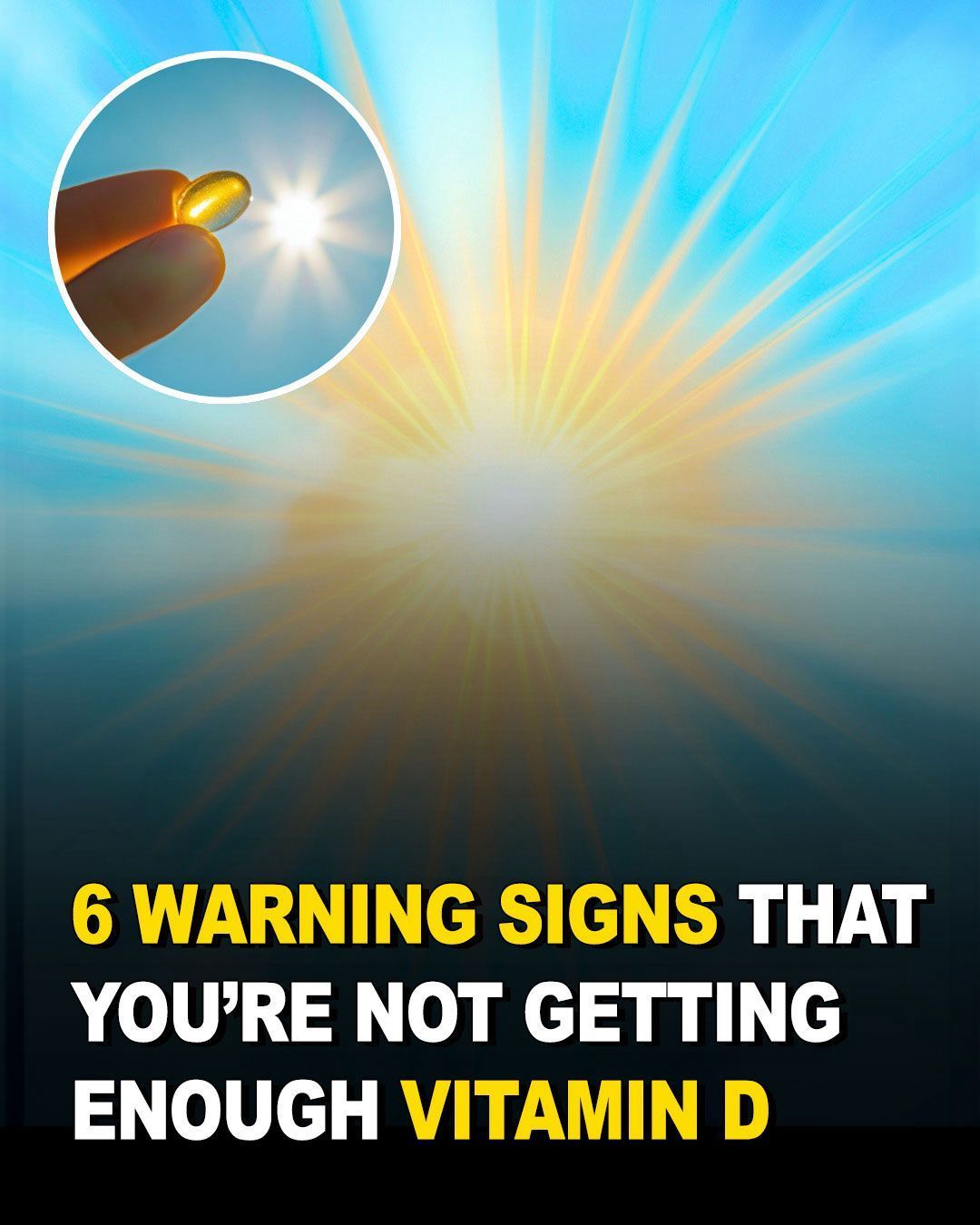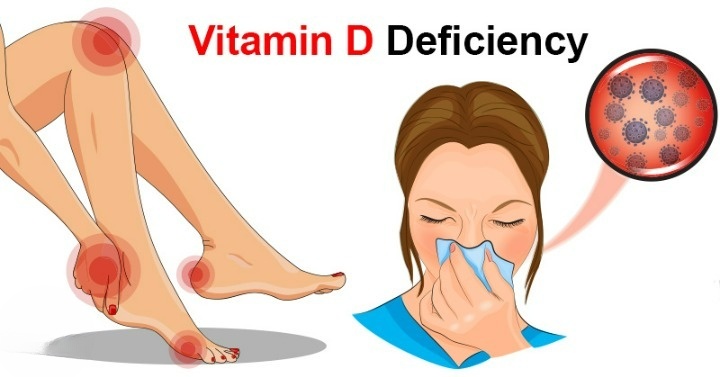
Known as the “sunshine vitamin,” vitamin D plays a vital part in keeping your body functioning at its best.
From supporting your immune defenses and bone strength to regulating mood and promoting heart health, this nutrient does a lot more than most people realize.
Yet despite its importance, many individuals fall short on vitamin D due to lack of sun exposure, poor diet, or certain health conditions—leading to symptoms that can seriously affect daily life.
Here are 7 telltale signs you might be vitamin D deficient, along with actionable ways to restore healthy levels and give your immunity a boost.

1. You’re Always Getting Sick
Why It Happens: Vitamin D is crucial for your immune system. It activates T-cells and other immune defenses that target viruses and harmful bacteria.
What to Watch For: If you’re constantly coming down with colds, the flu, or other infections, it could signal low vitamin D.
What to Do: Try to increase your sun exposure, add more vitamin D-rich foods to your diet, or consider supplementation if needed.
2. Persistent Fatigue or Low Energy
Why It Happens: Low vitamin D levels have been linked to fatigue, possibly due to its role in how your cells produce energy.
What to Watch For: You feel exhausted all the time—even after a full night’s sleep or rest.
What to Do: Add foods rich in vitamin D to your meals or discuss supplements with your healthcare provider.
3. Bone Discomfort or Weak Muscles
Why It Happens: Vitamin D enhances calcium absorption, essential for bone strength. Without enough, you may develop bone pain or feel physically weak.
What to Watch For: Aching in your bones (especially in the lower back, hips, or legs), or struggling with movements like standing up or climbing stairs.
What to Do: Combine vitamin D intake with calcium-rich foods like dairy products, leafy greens, or fortified plant milks.

4. Mood Swings or Feelings of Depression
Why It Happens: The brain has vitamin D receptors that influence mood. A deficiency is often linked to increased risk of depression, anxiety, or seasonal affective disorder (SAD).
What to Watch For: Ongoing sadness, lack of motivation, or irritability—especially during darker winter months.
What to Do: Spend more time outdoors when possible, and look into light therapy or vitamin D supplementation.
5. Slow Healing Wounds
Why It Happens: Vitamin D helps control inflammation and supports new tissue growth, which are essential for healing.
What to Watch For: Cuts, scrapes, or even surgical wounds that take longer than usual to close.
What to Do: Ensure you’re meeting your daily vitamin D needs to speed up recovery and reduce inflammation.
6. Hair Thinning or Shedding
Why It Happens: Severe vitamin D deficiency may be connected to hair loss, including conditions like alopecia areata. It may also contribute to general hair thinning.
What to Watch For: Sudden or unexplained hair loss, especially if paired with fatigue or mood changes.
What to Do: Increase vitamin D through diet or supplements, and consider checking for other contributing factors like stress or hormone imbalances.

7. Ongoing Back Pain
Why It Happens: Since vitamin D plays a major role in bone strength, low levels can contribute to chronic lower back pain, particularly in people with osteoporosis or related issues.
What to Watch For: Consistent back pain, especially without a clear physical cause or injury.
What to Do: Talk to your doctor about vitamin D supplements and consider low-impact strength training to help protect your spine.
How to Naturally Boost Vitamin D and Strengthen Your Immunity
If you suspect you’re not getting enough, here are smart, simple ways to naturally raise your vitamin D levels:
1. Soak Up Some Sunlight
Why It Works: Your skin makes vitamin D when it’s exposed to UVB rays from the sun.
Tips:
- Aim for 10–30 minutes of sun exposure a day (depending on your skin tone and location).
- Limit overexposure to prevent skin damage—short, safe bursts are enough.
2. Eat More Vitamin D-Packed Foods
Why It Works: Some foods naturally contain or are fortified with vitamin D.
Top Sources Include:
- Fatty fish like salmon, mackerel, and sardines
- Egg yolks
- Fortified options like dairy, orange juice, and cereals
- Mushrooms that have been exposed to UV light
3. Consider a Vitamin D Supplement
Why It Works: Supplements are an easy and reliable way to correct a deficiency, especially when food and sun aren’t enough.
Dosage Guidelines:
- Adults usually need 600–800 IU daily, though higher amounts might be recommended with medical guidance.
- Opt for vitamin D3 (cholecalciferol) instead of D2—it’s more effective at raising levels in the blood.
4. Keep Track of Your Levels
Why It Works: Blood tests can reveal if you’re too low (or too high) in vitamin D.
Optimal Range: Aim for 30–100 ng/mL in your blood for best results.
5. Support Overall Health for Better Absorption
Why It Works: Issues like obesity, poor gut health, or medications can interfere with how your body uses vitamin D.
Helpful Tips:
- Maintain a healthy weight
- Eat a nutrient-dense diet rich in magnesium and zinc (which help vitamin D metabolism)
- Avoid smoking and limit alcohol intake
When to Talk to a Doctor
If you notice any of the symptoms above or suspect you’re low in vitamin D:
- Ask your doctor for a blood test to check your levels
- Work together to create a custom plan that fits your health needs, including diet and lifestyle changes or supplements
Final Words
Vitamin D is a powerhouse nutrient that supports everything from your immune system to your bones and emotional well-being. Spotting the signs of a deficiency early—and knowing how to fix it—can make a big difference in how you feel and function.
Whether it’s through sunshine, better nutrition, or a daily supplement, making vitamin D a priority will help keep you energized, uplifted, and resilient all year long.



